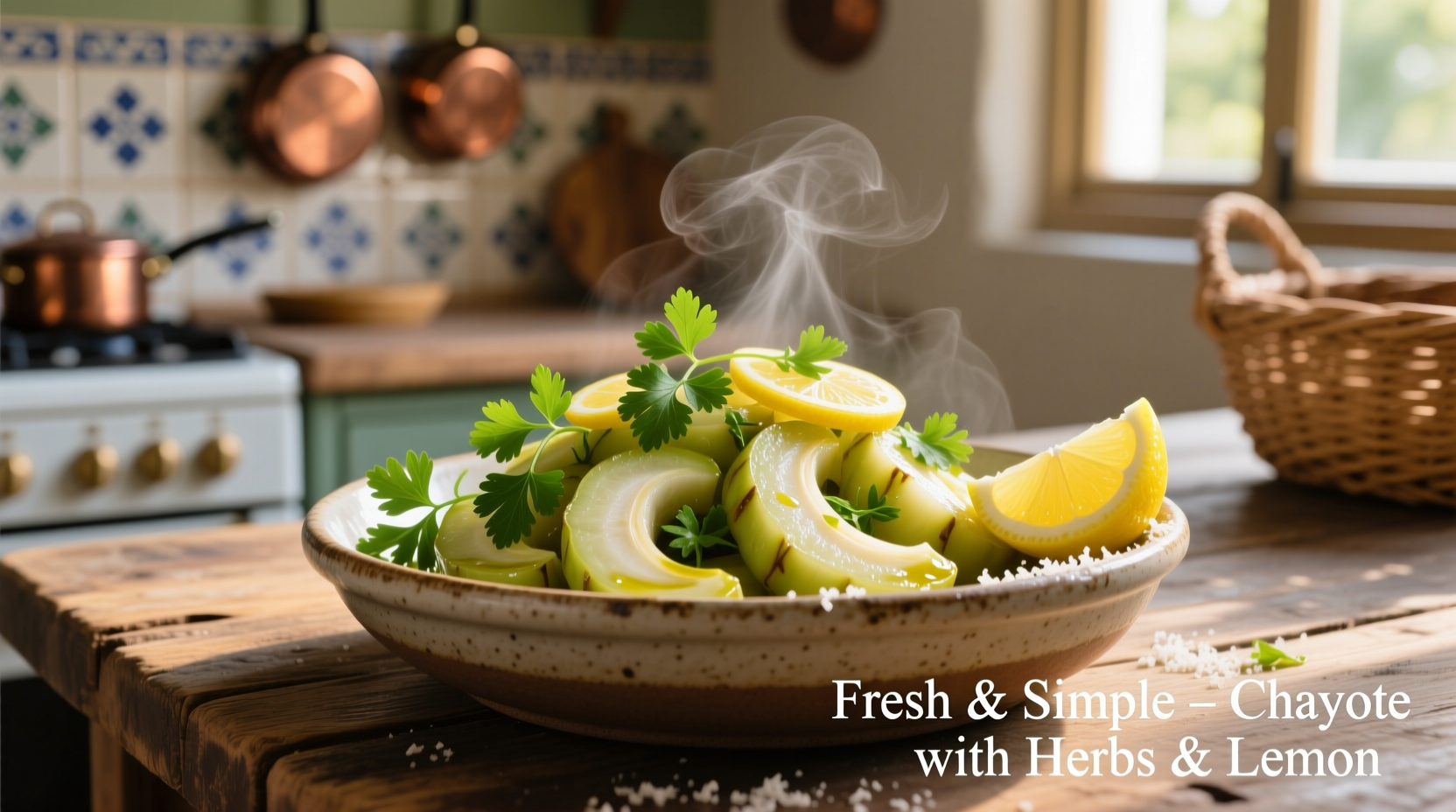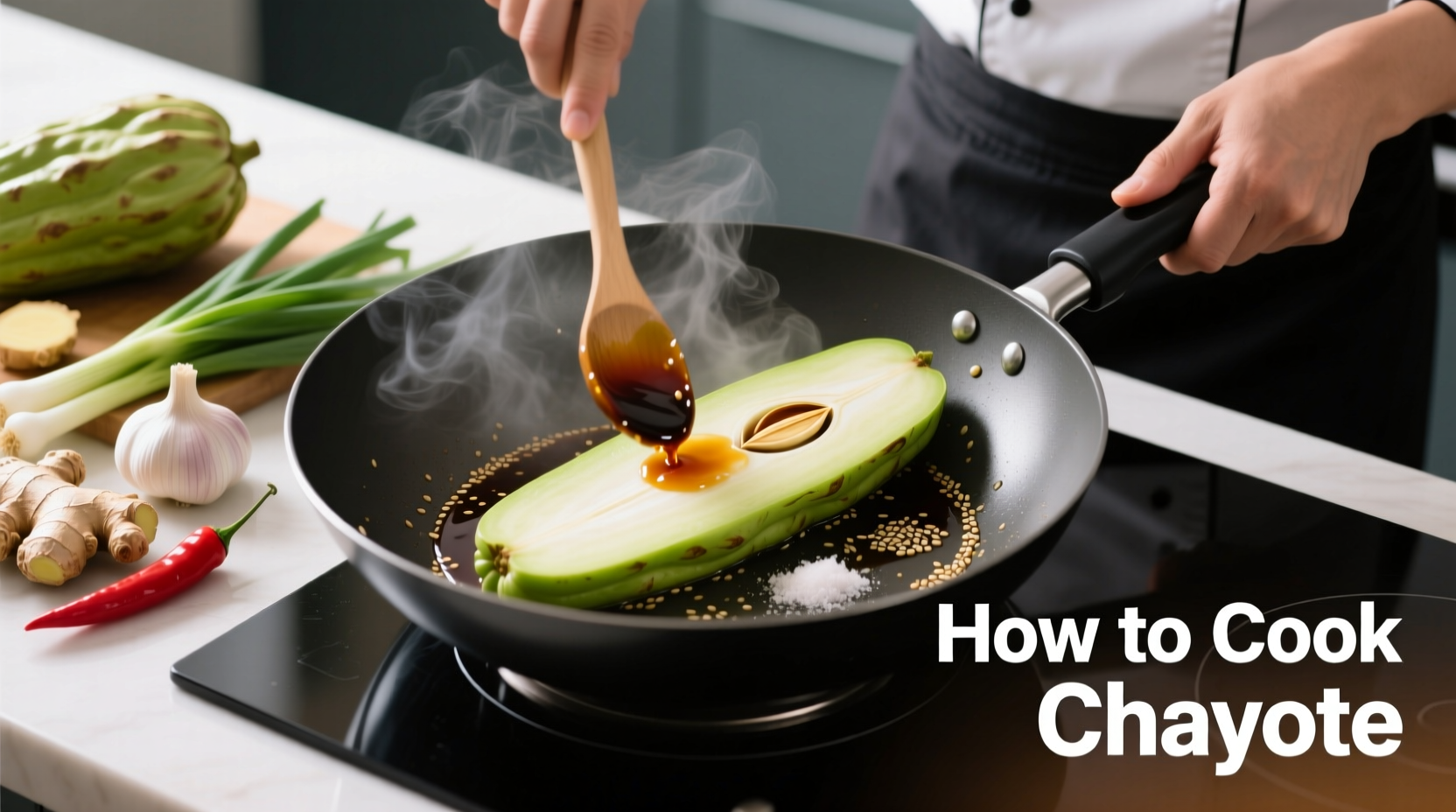Chayote, that intriguing pale green squash with its wrinkled skin and mild flavor, often leaves home cooks wondering how to transform it into something delicious. Don't worry if you've stared at this unique vegetable in the produce section unsure how to handle it – you're not alone. This comprehensive guide breaks down exactly how to prepare and cook chayote properly, turning what might seem intimidating into your new favorite kitchen staple.
Understanding Chayote: More Than Just a Squash
Native to Mesoamerica and widely used throughout Latin American and Caribbean cuisines, chayote (Sechium edule) belongs to the gourd family. Unlike many winter squashes, chayote is technically a "fruit vegetable" harvested while immature. Its crisp texture and neutral flavor make it incredibly versatile in the kitchen – it readily absorbs surrounding flavors while maintaining its structure during cooking.
Preparing Chayote: The Essential First Steps
Before you can cook chayote, proper preparation is crucial. Many beginners make the mistake of trying to cook it with the skin on, which becomes unpleasantly tough when heated.
Peeling Techniques That Actually Work
Chayote's slippery skin can be challenging to handle. Here's what professional chefs recommend:
- Cold water method: Work under running cold water to reduce slipperiness
- Non-slip grip: Use a clean kitchen towel to hold the chayote steady
- Vegetable peeler: A Y-shaped peeler works better than a swivel type for this particular vegetable
- Safety first: Cut a small slice off one end to create a stable base before peeling
| Preparation Method | Time Required | Best For |
|---|---|---|
| Peeling whole | 3-4 minutes | Stuffed chayote, roasting whole |
| Cubing (½ inch) | 5-6 minutes | Stews, soups, stir-fries |
| Slicing (¼ inch) | 4-5 minutes | Gratin, layered dishes, pickling |
| Shredding | 6-7 minutes | Fritters, slaws, hash browns |
Mastering Chayote Cooking Methods
Now that your chayote is properly prepared, let's explore the best cooking techniques. Each method brings out different qualities in this versatile vegetable.
Boiling: The Simplest Approach for Beginners
Boiling remains the most accessible method for cooking chayote, especially for those new to this ingredient. According to agricultural extension guidelines from the University of Florida's Institute of Food and Agricultural Sciences, boiling chayote in salted water preserves its crisp-tender texture better than other water-based methods.
Perfect boiled chayote every time:
- Bring 4 cups of salted water to a rolling boil
- Add cubed chayote (1 pound)
- Cook for exactly 8-10 minutes (set a timer!)
- Test with a fork – it should pierce easily but maintain shape
- Immediately drain and rinse with cold water to stop cooking
This method works exceptionally well for chayote salad or as a base for purees. The USDA National Nutrient Database confirms that boiling preserves approximately 85% of chayote's vitamin C content when cooked for the recommended time.
Steaming: Preserving Maximum Nutrition
For those seeking maximum nutrient retention, steaming outperforms boiling. Research published in the Journal of Food Science shows steaming preserves up to 92% of chayote's water-soluble vitamins compared to 85% with boiling.
Steaming instructions:
- Place chayote slices in a steamer basket
- Steam over rapidly boiling water for 10-12 minutes
- Check tenderness at 10 minutes
- Remove immediately to prevent overcooking
Roasting: Unlocking Natural Sweetness
Roasting transforms chayote's mild flavor into something extraordinary. When exposed to dry heat, the natural sugars caramelize, creating complex flavor notes that surprise even experienced cooks.
Perfect roasted chayote:
- Toss cubed chayote with 1 tablespoon olive oil per pound
- Add salt, pepper, and optional garlic powder
- Spread in single layer on parchment-lined baking sheet
- Roast at 400°F for 20-25 minutes, flipping halfway
- Finish with fresh herbs like cilantro or parsley
Stir-Frying: The Fastest Flavorful Method
For weeknight dinners, stir-frying delivers restaurant-quality results in minutes. Chayote's firm texture holds up beautifully to high-heat cooking.
Professional stir-fry technique:
- Heat 1-2 tablespoons oil in wok or skillet until shimmering
- Add aromatics (garlic, ginger) for 30 seconds
- Add chayote slices and stir-fry 5-7 minutes
- Finish with splash of soy sauce or lime juice

Flavor Pairings That Make Chayote Shine
Chayote's mild flavor serves as a perfect canvas for bold seasonings. Based on culinary research from the James Beard Foundation's flavor pairing database, these combinations consistently receive high marks from professional chefs:
- Latin American style: Lime juice, cilantro, red onion, jalapeño
- Mediterranean twist: Olive oil, lemon zest, oregano, Kalamata olives
- Asian fusion: Ginger, soy sauce, sesame oil, scallions
- Creamy preparations: Coconut milk, curry spices, toasted cashews
Nutritional Benefits Worth Noting
According to USDA nutritional data, one cup of cooked chayote provides:
- Only 26 calories
- 2.3 grams of dietary fiber (9% of daily value)
- 16% of your daily vitamin C needs
- Significant potassium and folate
Unlike many starchy vegetables, chayote has a low glycemic index of 51, making it suitable for blood sugar management diets. The edible seeds contain additional protein and healthy fats, so consider leaving them in for maximum nutritional benefit.
Storage Tips for Maximum Freshness
Proper storage extends chayote's shelf life significantly. Research from Cornell University's post-harvest physiology department shows that chayote maintains quality longest when stored under specific conditions:
- Whole, uncut: Store in cool, dark place (55-60°F) for up to 3 weeks
- Refrigerated: Place in crisper drawer in perforated plastic bag for 2-3 weeks
- Pre-cut: Store in airtight container with damp paper towel for 3-4 days
- Freezing: Blanch first, then freeze for up to 10 months
Common Mistakes to Avoid When Cooking Chayote
Even experienced cooks sometimes stumble with chayote. Here are the most frequent errors and how to prevent them:
- Skipping the peel: Never cook chayote with skin on – it becomes tough and unpleasant
- Overcooking: Results in mushy texture; always check 2 minutes before recommended time
- Underseasoning: Chayote needs bold flavors; don't be shy with seasonings
- Improper cutting: Uneven pieces cook inconsistently; aim for uniform size
- Not using the seeds: The edible seeds contain valuable nutrients; include them
Simple Recipe to Try Tonight
Garlic-Herb Roasted Chayote
- 2 medium chayotes, peeled and cubed
- 2 tablespoons olive oil
- 3 garlic cloves, minced
- 1 teaspoon dried thyme
- Salt and pepper to taste
- 1 tablespoon fresh parsley, chopped
Toss all ingredients except parsley, spread on baking sheet, roast at 400°F for 20-25 minutes until golden and tender. Sprinkle with fresh parsley before serving. This simple preparation showcases how to cook chayote properly while highlighting its natural flavor.











 浙公网安备
33010002000092号
浙公网安备
33010002000092号 浙B2-20120091-4
浙B2-20120091-4